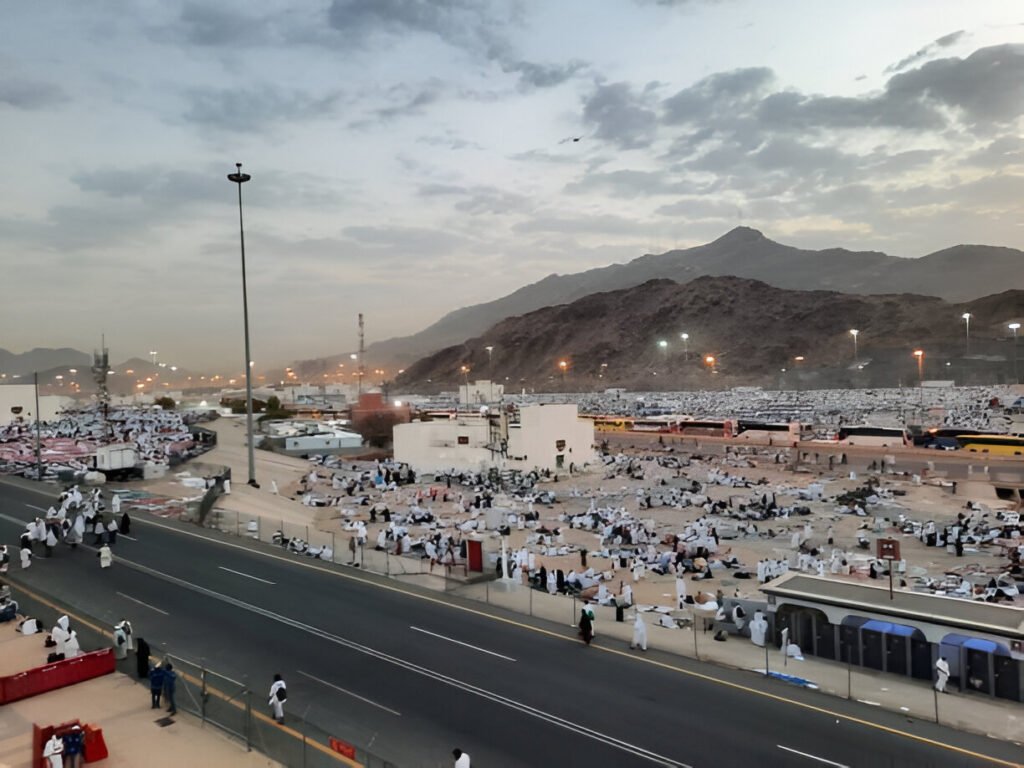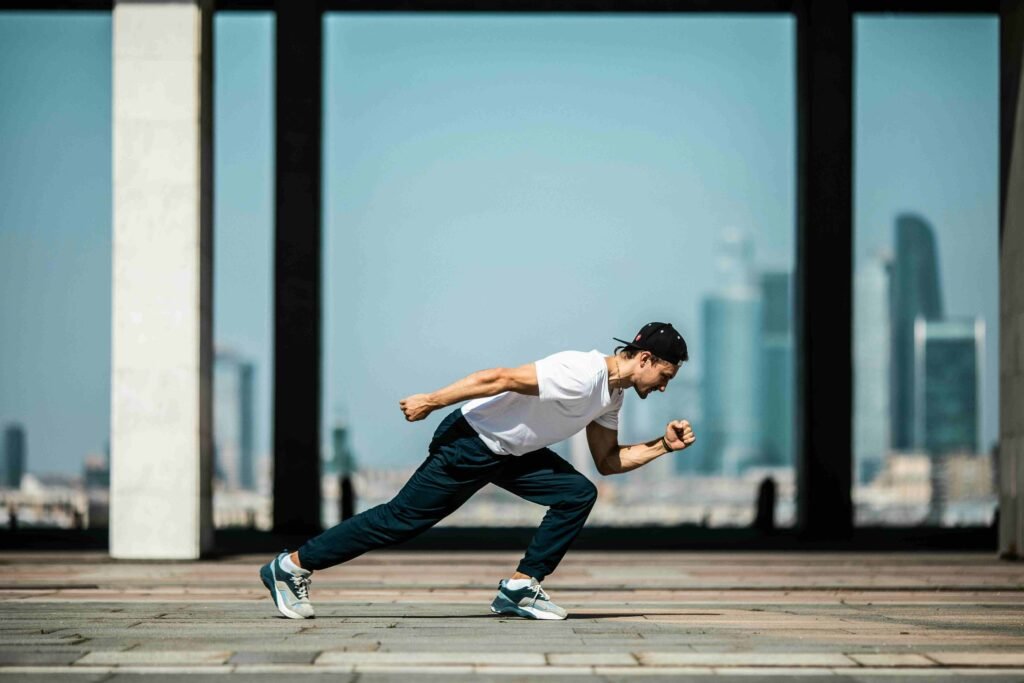10th Dhu al-Hijjah is Eid for those who are not performing Hajj, but for the pilgrims, there is no Eid. For those not performing Hajj, today is their Eid.
Acts to Perform on the Night of 10th Dhu al-Hijjah
Go to Muzdalifah and perform Maghrib and Isha prayers consecutively, shortening them. Spend the night in Muzdalifah, sleep there, and after performing the Fajr prayer, proceed to Mina for the stoning of Jamrat al-Aqabah.
Location of Muzdalifah
Staying in Muzdalifah symbolizes a life of simplicity, homelessness, and deprivation. Muzdalifah is located within the boundaries of the Haram. Muzdalifah begins after passing 6 km beyond the boundaries of Arafat. After Muzdalifah, there is a small area called Wadi al-Muhassir, and then the boundaries of Mina begin.
Virtue of Muzdalifah
Allah says in the Quran: “When you depart from Arafat, remember Allah at Mashar al-Haram (Muzdalifah). Remember Him as He has guided you, even though previously you were among those astray.” (Surah Al-Baqarah, 2:198)
The Prophet (PBUH) said about the virtue of staying in Muzdalifah: “On this day, Allah has bestowed His favor upon you. He has forgiven the sinners through the righteous ones and granted the righteous ones whatever they have asked for. So, return with the remembrance of Allah.” (Ibn Majah – 3024)
What to Do in Muzdalifah
Leave the plain of Arafat after sunset without performing the Maghrib prayer, and set out for Muzdalifah. Do not leave Arafat before sunset, as doing so requires a penalty (damm). Start your journey calmly and avoid rushing to board the bus. Keep reciting Talbiyah during the journey. All buses usually depart for Muzdalifah around the same time, leading to significant traffic congestion. Stay with your group to avoid getting lost, as the chances of separation and losing your way are very high. There is a separate one-way road for those walking to Muzdalifah, which is not used by vehicles. However, if you are unfamiliar with the route and fear getting lost, it is better to take the bus. (Bukhari – 1671, Abu Dawood – 1925)
There are no tents in Muzdalifah. Once the buses drop you off, they leave. Some hired buses, however, remain there. You will need to perform prayers and spend the night under the open sky on a mat spread over the stone and soil. In some areas of Muzdalifah, large carpets are distributed for overnight stays. You will find even millionaires and industrialists sleeping on sidewalks, mountain slopes, and near public restrooms under the open sky. Restroom facilities are extremely limited, so be cautious about this.
Upon reaching Muzdalifah, the first task is to perform Maghrib and Isha prayers consecutively, shortening them. If you pray in congregation, one call to prayer (adhan) and one call to commence (iqamah) are sufficient. Perform three rakats of Maghrib prayer first, followed immediately by two rakats of Isha prayer. There should be no prayer between these two. After the Isha prayer, you may perform one or three rakats of the Witr prayer, as the Prophet (PBUH) never skipped Witr in either residence or travel. (Bukhari – 1673, 1683; Muslim – 3002)
If you arrive in Muzdalifah and it is not yet time for the Isha prayer, you should wait. If, due to heavy traffic, you cannot reach Muzdalifah before midnight, you may stop along the way and perform Maghrib and Isha prayers on the bus. (Bukhari – 1683)
After completing the prayers, there is no other activity. Lie down and rest, as the Prophet (PBUH) rested and slept at Muzdalifah during the night. Since there are many activities and significant physical effort required on the day of 10th Dhu al-Hijjah, it is better to take rest during the night at Muzdalifah.
Spending the night within the boundaries of Muzdalifah is obligatory
The elderly, weak, obese, children, and sick individuals, along with their caretakers, may leave Muzdalifah for Mina after midnight. However, without a valid excuse, leaving Muzdalifah early and heading to Mina is not permissible. Doing so will require a penalty (damn). (Bukhari – 1679, Muslim – 3009, 3019, Nasa’i – 3048)
Muzdalifah Stone Collection
Before sleeping, you can collect seven pebbles for stoning Jamrat Al-Aqaba. Alternatively, you may collect the stones in the morning after waking up. The Prophet (peace be upon him) collected pebbles from a location between Muzdalifah and Mina, so there is no issue with collecting pebbles from Muzdalifah, but it should not be considered mandatory or believed that the stones from Muzdalifah possess any special significance. You can later collect pebbles from Mina or anywhere within the boundaries of the Haram.
If you wish, you can also collect pebbles from Muzdalifah for stoning Jamrat on the subsequent three days. However, it should not be deemed necessary to collect all pebbles from Muzdalifah, as there are opportunities to collect stones from Mina as well. Though collecting stones might be slightly challenging in some areas of Mina, it is generally easier in Muzdalifah.
The size of the pebbles for stoning should be similar to chickpeas or fava beans. Collecting larger stones is considered Makruh (disliked). There is no instruction in Hadith regarding washing or cleaning the stones. It is advised to collect extra pebbles as some might get lost during stoning. Store the collected stones in a small bag or plastic bottle. If you fail to collect stones from Muzdalifah or Mina, you can take them from someone else without any issue.
If you are concerned that everyone collecting stones from Muzdalifah might deplete the supply, rest assured that such a situation will not occur. After Hajj, the stones are returned to Muzdalifah.
The area between Muzdalifah and Mina is called Wadi Muhassir, which is not part of Muzdalifah. Therefore, you should not stay there. It is the location where Abrahah’s army with elephants was defeated by flocks of birds that pelted them with stones.
Currently, a portion of Muzdalifah is used as Mina due to the high number of pilgrims. Although this area is used as Mina, it has not fundamentally become Mina. Therefore, spending the night in tents in this area is considered equivalent to spending the night in Muzdalifah.
Muzdalifah ukuf
After waking up at the time of Subh Sadiq, offer the Fajr Salah at its earliest time. Perform two rakats of Sunnah and two rakats of Fard Salah. Then engage in Wuquf (standing) in Muzdalifah and make Du’a and Dhikr as Allah has instructed in Surah Al-Baqarah, 2:198, and Surah Al-A’raf, 7:205. The Prophet (peace be upon him) performed Wuquf at the base of a hill in Muzdalifah. That spot is now located in front of the Al-Mash’ar Al-Haram Mosque on Road 5 in Muzdalifah, which has a capacity for 12,000 worshippers. However, the Prophet (peace be upon him) said, “I performed Wuquf here, but all of Muzdalifah is a place for Wuquf.”
Face the Qibla, raise your hands, and engage in abundant Dhikr and Du’a.
Proclaim Allah’s purity:
“SubhanAllah” – “Allah is free from all imperfections.”
Praise Allah:
“Alhamdulillah” – “All praise is due to Allah.”
Declare Allah’s Oneness:
“La ilaha illallah” – “There is no deity worthy of worship except Allah.”
Declare Allah’s greatness:
“Allahu Akbar” – “Allah is the Greatest.”
Repeat these phrases continuously until the light of dawn appears. You can also recite other Du’as and Dhikr of your choice. Depart for Mina before sunrise, as emphasized in the Hadith.
Important Information about Muzdalifah
The most challenging part of Hajj begins on the journey from Arafah to Muzdalifah. Buses depart from Arafah after sunset, but due to heavy traffic, they move very slowly. Often, the number of buses is reduced because of the traffic, leading to transport shortages, where pilgrims may have to stand in buses, causing fatigue and illness. Ask your agency to coordinate with Saudi Muallim to ensure adequate transport arrangements so that all passengers have seats on the bus.
Because of the heavy traffic, some pilgrims leave the buses and start walking, doubting whether they will reach Muzdalifah before midnight. If you find yourself in this situation, you must decide whether to leave the bus or not. Leaving the bus means you will not find another, and you will have to walk the remaining distance.
Some pilgrims mistake a mountainous area along the way as Muzdalifah, offering Maghrib and Isha there and spending the night. Later, upon reaching the Muzdalifah boundary in the morning, they realize their mistake and regret it. This error affects the completion of a significant obligation of Hajj, leading to the requirement of offering a penalty.
Inquire beforehand whether your agency will provide dinner at Muzdalifah. The chances are low since arranging meals there is difficult. There are limited shops for food and water nearby. Therefore, carry essential food and water supplies for Muzdalifah. If toilets are limited or water becomes unavailable, you may perform Tayammum (dry ablution) for Fajr Salah.
Common Mistakes and Innovations in Muzdalifah
Leaving Arafah hastily to reach Muzdalifah.
Considering it obligatory to take a bath before spending the night in Muzdalifah.
Entering Muzdalifah barefoot, believing it to be a sacred area.
Believing it Sunnah to recite specific Du’a upon arriving in Muzdalifah, such as, “O Allah, this is Muzdalifah; here many languages converge…”
Offering Sunnah Salah after Maghrib and Isha or after Isha Salah.
Collecting stones for stoning before offering Maghrib and Isha Salah in Muzdalifah.
Believing that stones must be collected only from Muzdalifah.
Staying awake the entire night in Muzdalifah.
Leaving Muzdalifah without an excuse after a brief stay.
Assuming it is necessary to recite a specific Du’a at Al-Mashar Al-Haram, such as, “O Allah, I seek Your mercy in this night through this location…”
Collecting only seven stones in Muzdalifah for stoning and obtaining the rest from Wadi Muhassir.



